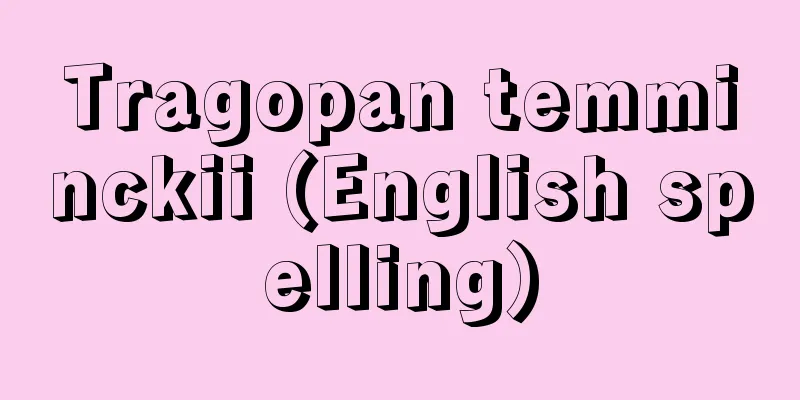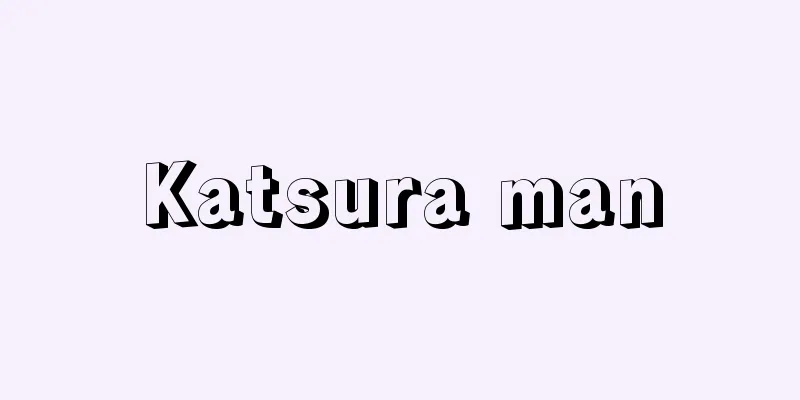Shosagoto - Shosagoto

|
It means dance or dance drama. It is the same as Furigoto (a dance performed in a dance scene) or Keigoto (a scene performed in a dance scene). Originally, "Shosaku" was a general term meaning technique or behavior, but in the Middle Ages, it came to be used as a term in the performing arts to refer to movements such as dancing or playing an instrument. In Kabuki, it came to refer specifically to dance-like movements, as seen in the famous "Shosa no Hiden" by Sadoshima Chogoro. During the Horeki era (1751-64), the concept was established as one of the "Koto" (a dance performed in a dance scene), and it became synonymous with dance. A Shosakuto piece usually follows a typical structure that begins with "oki," passes through "michiyuki," moves to the central part of "narration," "kudoki," and "odori-chi," and eventually ends with "chirashi" or "dankire." The term keigoto was used in Kamigata, but originally came from the term michiyuki buyo (walking dance) of early Kabuki, and is not commonly used. Shosagoto is generally used to refer to Nagauta pieces, and when the basis is Joruri, such as Tokiwazu or Kiyomoto, it is usually called "Joruri" or "Joruri Shosagoto," but in recent years the terms have often been used in a confused way. When performing Shosagoto, a Shosagoto stage is laid on the Hanamichi and main stage, and the accompanying music often takes the form of degatari (entrance speech) and debayashi (entrance music). [Yukio Hattori] Source: Shogakukan Encyclopedia Nipponica About Encyclopedia Nipponica Information | Legend |
|
舞踊または舞踊劇のこと。振事(ふりごと)・景事(けいごと)というのと同義。「所作」は元来はしわざ・ふるまいの意味の一般語であったが、中世には芸能用語として、舞を舞うとか楽器を奏するとかの動作をさすようになる。歌舞伎(かぶき)に入っては、とくに舞踊的な動作をさしていうようになり、有名な佐渡島長五郎の『しょさの秘伝』もその用法の例である。宝暦(ほうれき)年間(1751~64)には「こと」の一つとして概念が定着し、もっぱら舞踊と同義になる。一編の所作事は「置き」に始まり、「道行(みちゆき)」を経て、「語り」「くどき」「踊り地」といった中心部に移り、やがて「ちらし」または「段切れ」をもって終わるという類型の構成をとるのが普通である。景事という用語は上方(かみがた)で使われたが、もともと初期歌舞伎の道行舞踊をさしていったところから出たもので、あまり一般的には使われない。所作事は原則として長唄(ながうた)物をさすときに用い、常磐津(ときわず)・清元(きよもと)など浄瑠璃(じょうるり)を地とするときは「浄瑠璃」もしくは「浄瑠璃所作事」というのが普通であるが、近年は混乱して用いられることも多い。所作事を上演するときは、花道・本舞台に所作舞台を敷き、伴奏音楽は出語(でがたり)・出囃子(でばやし)の形式をとることが多い。 [服部幸雄] 出典 小学館 日本大百科全書(ニッポニカ)日本大百科全書(ニッポニカ)について 情報 | 凡例 |
Recommend
Carrageenan (English spelling)
A polysaccharide extracted from red algae such as ...
Pechiney SA
A French non-ferrous metals company. It is the wor...
Paulownia wood - Kiri Okura
?-? A female Kabuki actor and theater owner in th...
Islamabad (Bangladesh) - Islamabad
…It is close to the mouth of the Meghna River and...
Itonegg - Itonegg
The name Tinguian comes from the Malay word tingg...
Obrodenie
…a cultural movement widespread among the peoples...
Tamari Kizo - Tamari Kizo
1856-1931 An agricultural scientist from the Meij...
Gentaro Dairaku
A patriot of the Sonnjou faction of the Choshu Do...
Kachido - Kachido
… [Diving operations and equipment] In ancient do...
Peking Duck - Peking Duck
A famous Beijing dish called Kao Yaz, which is mad...
Ureaform - Ureaform
…Nitrogen is an important element for plants, con...
Obock (English spelling)
A port city in eastern Djibouti. Located on the no...
Phanes (English spelling)
...The egg was later held by a giant snake, from ...
Russula fragilis (English spelling) Russulafragilis
…[Rokuya Imaseki]. . … *Some of the terminology t...
Omura Sumitada
A feudal lord in the late Sengoku period. Born as...









